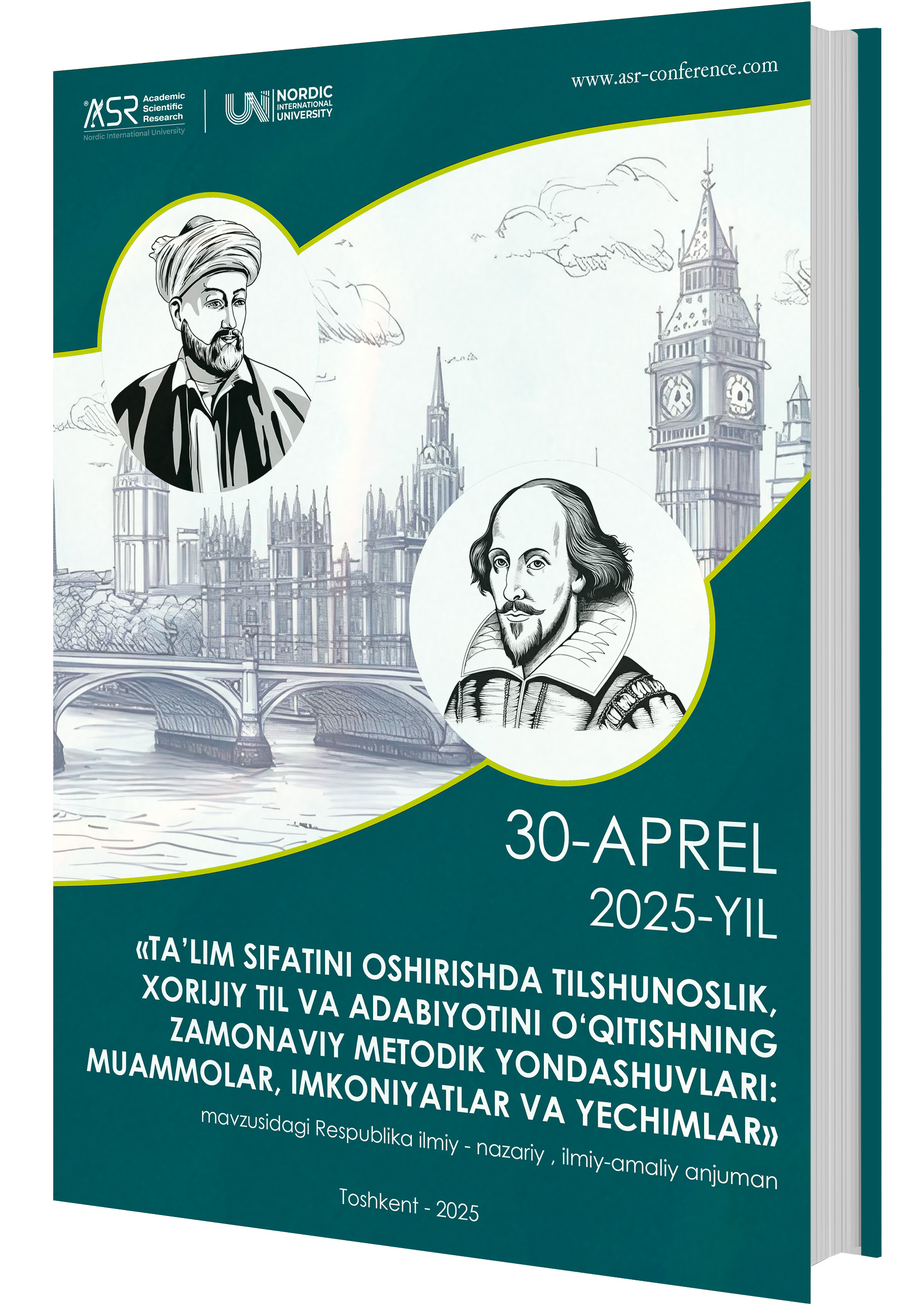A PSYCHOLOGICAL ANALYSIS OF THE NOVELLA STRANGE CASE OF DR. JEKYLL AND MR. HYDE WRITTEN BY R.L.STEVENSON
Аннотация
This article explores the psychological aspects of Robert Louis Stevenson’s Strange Case of Dr. Jekyll and Mr. Hyde through the lens of Carl Jung’s concept of the shadow. The novella portrays the duality of human nature, with Dr. Henry Jekyll representing the socially acceptable, conscious self, and Mr. Edward Hyde embodying the repressed, darker impulses of the psyche. Using Jungian theory, this article examines how Jekyll’s attempts to separate and control his two identities lead to psychological fragmentation and moral decay. By analyzing the characters of Jekyll and Hyde, this paper highlights the psychological consequences of refusing to integrate the unconscious and emphasizes the necessity of confronting and accepting the shadow for psychological wholeness.
Библиографические ссылки
Freud, S. (1923). The Ego and the Id. Standard Edition, Vol. 19. London: Hogarth Press.
FERNANDES, F. S. Stevenson’s Moral Philosophy in “Strange Case of Dr Jekyll and Mr Hyde”. Conference:Humanidades. Brazil. 2010.
Robinson H. Dualism. In: Stich S, Warfield T, editors. The Blackwell guide to philosophy of mind. Oxford: Blackwell; 2003. pp. 85–101.
Jung, Carl. Psychological Aspects of the Self. 1953.
Stevenson, Robert Louis. Dr. Jekyll and Mr. Hyde. 1886.
Harker, E. J. D. L. (1992). The Shadow Self: A Jungian Approach to Dr. Jekyll and Mr. Hyde. Journal of Jungian Psychology, 8(1), 34-48.
Seed, D. (2010). Jekyll and Hyde in Popular Culture: A Legacy of Duality. Cultural Studies Journal, 19(4), 76-85.
Nasriddinov, D. (2021). Scientific interpretation of fantasy works and their types. Philology Matters, 2021(2), 35-49.
Nasriddinov, D. А. (2020). FANTASY LITERATURE: CLASSIFICATONS OF FANTASY GENRE. Редакционная коллегия, 353.
Загрузки
Опубликован
Выпуск
Раздел
Лицензия
Copyright (c) 2025 Go’zal Zakhidova

Это произведение доступно по лицензии Creative Commons «Attribution-NonCommercial» («Атрибуция — Некоммерческое использование») 4.0 Всемирная.
Условия лицензии
Эта работа доступна под лицензией Creative Commons Attribution-NonCommercial 4.0 International License. Чтобы просмотреть копию этой лицензии, посетите http://creativecommons.org/licenses/by-nc/4.0/ или отправьте письмо по адресу Creative Commons, PO Box 1866, Mountain View, CA 94042, США.
По этой лицензии вы можете:
Поделиться — копируйте и распространяйте материал на любом носителе и в любом формате.
Адаптируйте — делайте ремиксы, трансформируйте и дорабатывайте материал.
Лицензиар не может отозвать эти свободы, если вы соблюдаете условия лицензии. На следующих условиях:
Атрибуция. Вы должны указать соответствующую ссылку, предоставить ссылку на лицензию и указать, были ли внесены изменения. Вы можете сделать это любым разумным способом, но не таким образом, который бы предполагал, что лицензиар одобряет вас или ваше использование.
Некоммерческое использование — вы не имеете права использовать материал в коммерческих целях.
Никаких дополнительных ограничений. Вы не имеете права применять юридические условия или технологические меры, которые юридически запрещают другим делать все, что разрешено лицензией.





